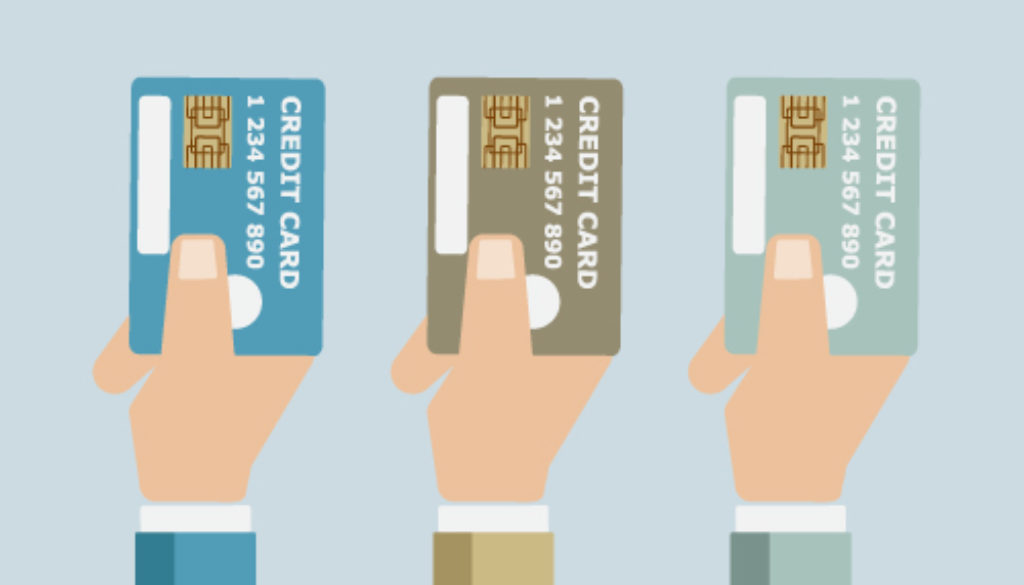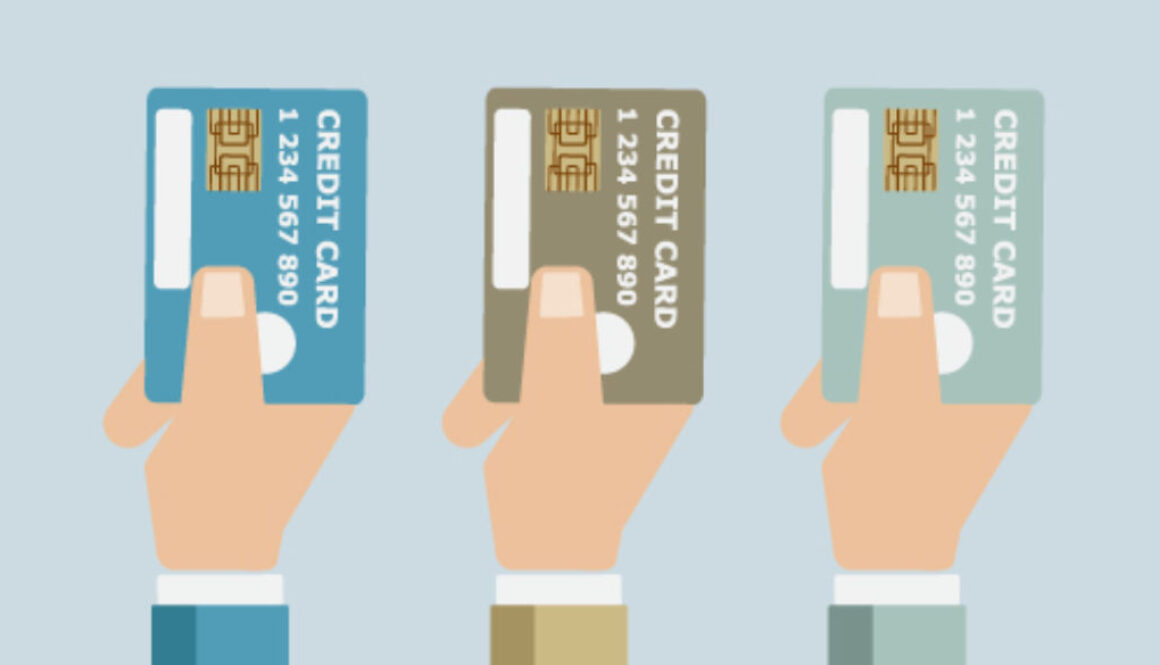Credit cards – the story so far

Credit cards – the story so far
Before Frank
Right from the turn of the 20th century, a number of businesses had been issuing their own convenience cards designed to encourage customer loyalty. Oil companies and several department stores had begun to issue cards to customers, but their use was restricted to those specific businesses only.
Much later, in 1946, a Brooklyn banker by the name of John Biggins released a card known as “Charg – It.” It allowed bank account customers to use the card to make purchases locally that would be later reimbursed by Biggins bank.
After Frank
According to banking folklore, the idea of a universal credit card of the type we know today came about when the aforementioned Frank McNamara had enjoyed dining at a New York restaurant in 1949, only to discover he’d left his wallet at home when the bill arrived.
His wife was believed to have saved the day by arriving later bearing cash. However, not wishing to be faced with this embarrassing predicament again, Frank went on to introduce the first true consumer credit card in 1950, with his business partner, Ralph Sneider.
Their card was known as the Diner’s Club card and it allowed members of the club to dine out and pay later. Strictly speaking, this was actually a charge card and the full amount would have to pay for in full by the end of the month. The concept caught on quickly and by 1951, there were 20,000 Diner’s Club cardholders eating out on credit.
In the same year, Franklin National Bank joined in with a more versatile credit card. Many other banks soon followed suit, although their popularity was still limited because they could only be used when shopping in the local area.
Along came Amex and plastic
American Express had been in business since 1850, but despite discussing the idea of a travel card after World War 2, the company didn’t launch its own card until 1958. This was a charge card, specifically aimed at the travel and entertainment market, so its use was still relatively restricted.
The very next year, in 1959, American Express broke new ground with the debut of the world’s first plastic card (previously, cards were usually made from cardboard).
Towards the modern era – MasterCard
Also in 1959, MasterCard established a new revolving balance concept, like today’s cards, and allowed customers to extend their line of credit, rather than pay off their bills in full at the end of the cycle.
Naturally this gave customers more flexibility, but it was accompanied by accumulating finance charges along the way.
Then, in the 1960’s, along came many of the credit card brands, including a general use card from the Bank of America, franchised to banks across the USA and which later became known as the now familiar Visa card.
As the industry grew, more banks became involved, initially forming allegiances with either Visa or MasterCard, although later on rule changes allowed banks to be aligned with both organisations if they wished.
1987 – Amex joins the credit card club
It wasn’t until 1987 that American Express released their first true credit card. Until then, they still focused on a charge card aimed at the travel and entertainment market, extracting a fee from merchants and requiring cardholders to pay annual membership costs.
While Amex still offers a charge card today, competition has seen them introduce no-fee credit cards, together with low cost establishment fees and reward programs, just like their many bank-based rivals.
The future
It seems like credit cards are going to be around for a while, although technology and security issues has led to many technology changes, such as “smart cards”. These have a microchip imbedded in the card and which can’t be used unless the user knows the pin, making fraudulent use of “smart cards” far more difficult.
These advances have made life easier and more secure for travelling customers as banks have increasingly adopted microchip-based credit card technology across the globe.
Elsewhere, the same microchip technology is being used, such as in key fobs and in smart phones.
The plastic card is still popular, but the emergence of online credit such as PayPal has changed the way people pay for goods forever.
Credit cards – the story so far
Before Frank
Right from the turn of the 20th century, a number of businesses had been issuing their own convenience cards designed to encourage customer loyalty. Oil companies and several department stores had begun to issue cards to customers, but their use was restricted to those specific businesses only.
Much later, in 1946, a Brooklyn banker by the name of John Biggins released a card known as “Charg – It.” It allowed bank account customers to use the card to make purchases locally that would be later reimbursed by Biggins bank.
After Frank
According to banking folklore, the idea of a universal credit card of the type we know today came about when the aforementioned Frank McNamara had enjoyed dining at a New York restaurant in 1949, only to discover he’d left his wallet at home when the bill arrived.
His wife was believed to have saved the day by arriving later bearing cash. However, not wishing to be faced with this embarrassing predicament again, Frank went on to introduce the first true consumer credit card in 1950, with his business partner, Ralph Sneider.
Their card was known as the Diner’s Club card and it allowed members of the club to dine out and pay later. Strictly speaking, this was actually a charge card and the full amount would have to pay for in full by the end of the month. The concept caught on quickly and by 1951, there were 20,000 Diner’s Club cardholders eating out on credit.
In the same year, Franklin National Bank joined in with a more versatile credit card. Many other banks soon followed suit, although their popularity was still limited because they could only be used when shopping in the local area.
Along came Amex and plastic
American Express had been in business since 1850, but despite discussing the idea of a travel card after World War 2, the company didn’t launch its own card until 1958. This was a charge card, specifically aimed at the travel and entertainment market, so its use was still relatively restricted.
The very next year, in 1959, American Express broke new ground with the debut of the world’s first plastic card (previously, cards were usually made from cardboard).
Towards the modern era – MasterCard
Also in 1959, MasterCard established a new revolving balance concept, like today’s cards, and allowed customers to extend their line of credit, rather than pay off their bills in full at the end of the cycle.
Naturally this gave customers more flexibility, but it was accompanied by accumulating finance charges along the way.
Then, in the 1960’s, along came many of the credit card brands, including a general use card from the Bank of America, franchised to banks across the USA and which later became known as the now familiar Visa card.
As the industry grew, more banks became involved, initially forming allegiances with either Visa or MasterCard, although later on rule changes allowed banks to be aligned with both organisations if they wished.
1987 – Amex joins the credit card club
It wasn’t until 1987 that American Express released their first true credit card. Until then, they still focused on a charge card aimed at the travel and entertainment market, extracting a fee from merchants and requiring cardholders to pay annual membership costs.
While Amex still offers a charge card today, competition has seen them introduce no-fee credit cards, together with low cost establishment fees and reward programs, just like their many bank-based rivals.
The future
It seems like credit cards are going to be around for a while, although technology and security issues has led to many technology changes, such as “smart cards”. These have a microchip imbedded in the card and which can’t be used unless the user knows the pin, making fraudulent use of “smart cards” far more difficult.
These advances have made life easier and more secure for travelling customers as banks have increasingly adopted microchip-based credit card technology across the globe.
Elsewhere, the same microchip technology is being used, such as in key fobs and in smart phones.
The plastic card is still popular, but the emergence of online credit such as PayPal has changed the way people pay for goods forever.



